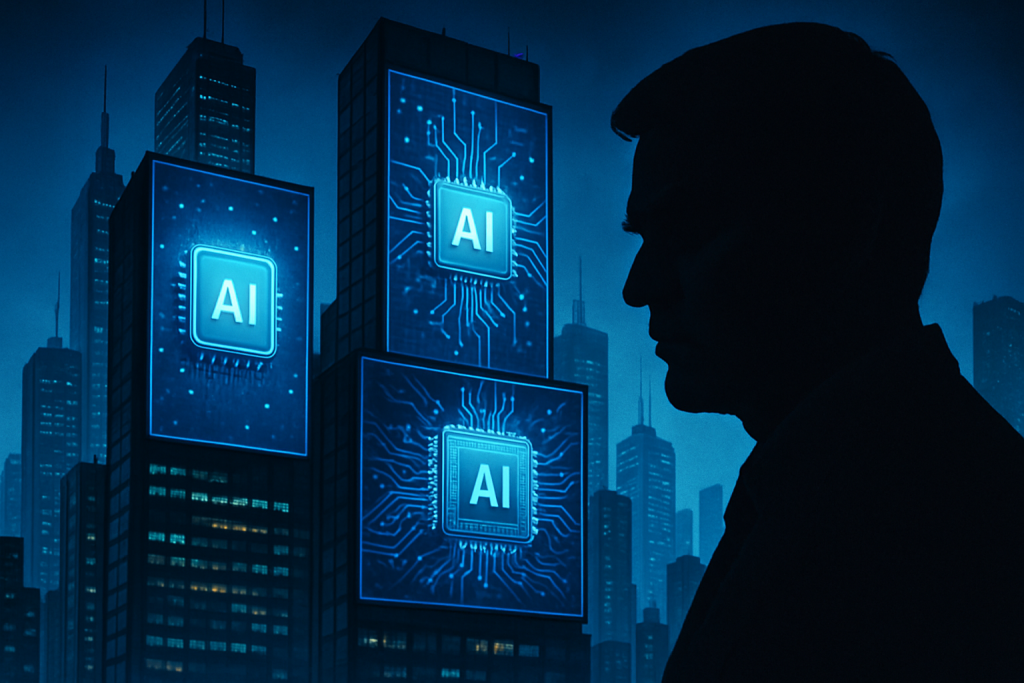The year is 2025. Flying cars are still a pipe dream (thanks, Elon!), but artificial intelligence is very much a reality, permeating every aspect of our lives from personalized medicine to, well, writing blog posts (not this one, of course!). But is the AI party starting to wind down? Are the champagne wishes and caviar dreams fading into the harsh light of a tech hangover?
Nvidia CEO Jensen Huang, the man who’s arguably been throwing the biggest AI bash of them all, emphatically says no. On August 28th, 2025, Huang addressed growing concerns about a potential slowdown in the AI market, delivering a message of unwavering optimism. Think of it as the tech world’s equivalent of Gandalf standing firm at the Bridge of Khazad-dûm, declaring, “You shall not pass!”…this AI boom.
Huang projected a multi-trillion-dollar opportunity in AI infrastructure spending over the next five years. He likened the current state of AI to the dawn of a new industrial revolution, a comparison that’s becoming increasingly common but no less impactful. It’s not just about faster search engines or smarter refrigerators; it’s about fundamentally reshaping industries, economies, and societies.
Nvidia’s Q2 earnings report certainly painted a rosy picture. Revenue soared to $46.7 billion, a whopping 56% year-over-year increase. That’s the kind of growth that makes even the most seasoned Wall Street analysts do a double-take. But despite these impressive figures, Nvidia’s stock price dipped slightly, by about 2%. What gives?
The culprit, as is so often the case these days, is geopolitical tension, specifically U.S. export controls on advanced AI chips to China. This is where the story gets a little more complex, a little more “House of Cards” than “Silicon Valley.”
The U.S. government’s restrictions on the sale of Nvidia’s cutting-edge H20 chip to China, a move initially expected to cost the company billions, highlights the delicate balancing act Nvidia is trying to perform. On one hand, they want to capitalize on the massive Chinese market. On the other, they need to comply with U.S. regulations aimed at preventing China from gaining a technological edge in areas like military AI.
While the initial ban on the H20 chip was partially walked back, Nvidia still faces significant limitations and, perhaps more importantly, growing competition from domestic Chinese firms like Huawei and Cambricon Technologies. It’s a classic case of “necessity is the mother of invention.” Faced with restrictions on access to Nvidia’s technology, Chinese companies are doubling down on their own AI chip development, potentially creating viable alternatives and eroding Nvidia’s dominance in the long run.
Huang, ever the optimist, emphasized that major tech companies and data center operators are fueling massive investments in AI infrastructure. He pointed to the strong demand for Nvidia’s high-end Blackwell and Hopper chips as evidence of the continued appetite for AI horsepower. The announcement of a $650 million purchase of the H20 chip by a customer outside of China further bolstered Nvidia’s narrative of sustained growth despite the geopolitical headwinds.
The Bigger Picture: Beyond the Chips
The Nvidia story isn’t just about semiconductors; it’s a microcosm of the broader AI landscape. It raises fundamental questions about the future of technological innovation, global competition, and the ethical implications of increasingly powerful AI systems. Are we on the cusp of a genuine AI-driven revolution, or are we simply experiencing a hype cycle that’s destined to eventually deflate?
The answer, as always, is likely somewhere in between. AI is undoubtedly transforming industries, but it’s also facing real-world challenges, from regulatory hurdles to ethical dilemmas. The debate over AI bias, for instance, continues to rage on. Are AI algorithms perpetuating and amplifying existing societal inequalities? And what about the potential for AI-driven job displacement? These are questions that require careful consideration and proactive solutions.
Furthermore, the geopolitical dimension adds another layer of complexity. The race for AI supremacy between the U.S. and China is not just about economic competitiveness; it’s also about national security and global influence. The decisions made by governments and companies in the coming years will have profound consequences for the future of AI and its impact on the world.
The Long Game: Nvidia’s Strategy
Nvidia’s strategy seems to be threefold: diversify its customer base, continue to innovate at a breakneck pace, and navigate the geopolitical landscape as deftly as possible. The purchase of the H20 chip by a non-Chinese customer is a clear indication of the company’s efforts to reduce its reliance on the Chinese market. Nvidia is also investing heavily in research and development, pushing the boundaries of AI hardware and software. Their Blackwell architecture, for example, promises to deliver unprecedented levels of performance, enabling even more complex and demanding AI applications.
But perhaps the most challenging aspect of Nvidia’s strategy is navigating the complex web of U.S. export controls and geopolitical tensions. This requires a delicate balancing act, one that involves working closely with governments, engaging in diplomatic efforts, and adapting to rapidly changing regulations.
So, is the AI boom over? Probably not. Is it facing some headwinds? Absolutely. Jensen Huang’s confidence is infectious, but the reality is that the future of AI is uncertain. The next few years will be crucial in determining whether AI lives up to its transformative potential or becomes just another overhyped technology.
One thing is clear: Nvidia will continue to play a pivotal role in shaping the AI landscape. Whether they can maintain their dominant position in the face of growing competition and geopolitical challenges remains to be seen. But one thing is for certain: the ride is far from over. Buckle up, folks, because the AI rollercoaster is just getting started.
Discover more from Just Buzz
Subscribe to get the latest posts sent to your email.


